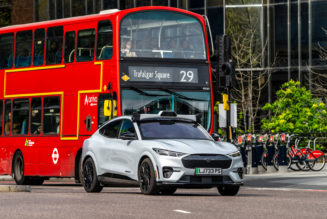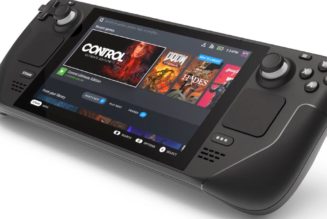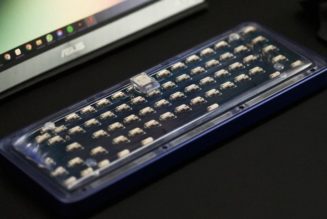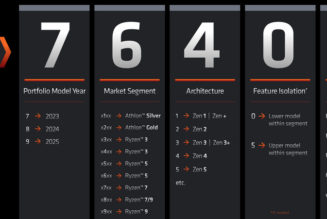If you’re reading this on a phone, chances are, LG didn’t make it. The Korean tech giant has been losing money and market share with its smartphone division for years, so it wasn’t a surprise when it finally announced plans to pull the plug today. You could be forgiven for shrugging.
But LG deserves to be remembered as more than just an also-ran. Its phones were rarely big hits, much less often the kind of polished product we’d ever recommend to most over its competitors. Despite this, LG did introduce several features and innovations that the phone world would be worse off without. The company was the first to put ultrawide cameras on its phones, for example, and it pioneered the kind of all-screen, no-button smartphone designs that dominate the market today.
And particularly in the US, where Android competition is extremely low, the loss of LG will only further entrench the Apple-Samsung duopoly at the high end. LG is the third-biggest phone vendor in the US, with roughly 10 percent of market share, although much of that was midrange prepaid devices sold through carrier stores. LG might not have been at the top of your smartphone shopping list, but if you live in the US, that list just got a lot more boring.
:no_upscale()/cdn.vox-cdn.com/uploads/chorus_asset/file/20054509/DSCF7243.jpg)
LG did have some claim to being a tastemaker in the pre-smartphone world. Its Chocolate and enV phones were stylish devices that helped LG expand its brand recognition around the world. But after the iPhone and Android changed everything, LG struggled to adapt. I’m duty-bound here to mention the original LG Prada, which had a capacitive touchscreen and was technically announced just before the iPhone, but its true legacy is mostly people pointing that out in online comments.
LG’s early Android phones weren’t impressive. The 2011 Nitro HD, for example, was its first splashy flagship device in a long time, but it was saddled with outdated, clunky software and poor battery life. Its successor, the Optimus G, represented a degree of refinement, and by the time the G2 came along in 2012, LG’s new G-series was a fairly credible alternative to the likes of Samsung or HTC. The G2 was one of the first flagship smartphones to attempt to cut down on bezel size, for example, and LG made on-screen buttons a core part of its design long before most others.
It was also around this time that LG found a new partner in Google, releasing two Nexus phones in a row. The 2012 Nexus 4 was built around the guts of the Optimus G, and it had its fans despite its crippling lack of LTE, weak battery life, and unimpressive camera. The next year’s Nexus 5 found an even stronger cult following despite it too having a poor camera and bad battery life. (The red version did look great, and the $349 price didn’t hurt.)
:no_upscale()/cdn.vox-cdn.com/uploads/chorus_asset/file/6305227/akrales_160407_1005_A_126.0.jpg)
LG’s mobile division kept on ticking on, turning out respectable phones like the G3 and G4 without ever really challenging Samsung. The software was still a heavy-handed customization of Android, and LG continued to lag behind peers with its pace of updates, but the hardware was solid. It was the 2016 G5 where things really started to fall apart. Designed around a series of swappable modular accessories called “Friends,” the phone flopped, and LG quickly pretended it never happened. Suffice it to say that if you bought a camera grip or a DAC Hi-Fi audio accessory for your G5, it wouldn’t be able to make Friends with 2017’s G6.
It’s unfortunate that LG focused on gimmicks with the G5 because that phone did introduce one new feature that would become ubiquitous in the smartphone market years later: the ultrawide camera. Ultrawides on smartphones let people capture pictures that were previously restricted to camera gearheads, and it’s hard to imagine buying a new phone without one today. But it took a long time for other phone makers to figure out the utility; Apple introduced its first in 2019, for example.
The V20, released the same year as the G5, had another unique feature that would become a hallmark of the company’s phones for years: an honest-to-God headphone jack in the year that Apple decided to ditch it. And not just any headphone jack — one that worked with a built-in quad DAC designed to boost sound quality and appeal to audiophiles. Did this sell many phones? Well, no. But it became a hallmark of LG’s high-end devices ever since, providing an option for wired headphone enthusiasts who despaired as other phone makers followed Apple’s lead one by one.
:no_upscale()/cdn.vox-cdn.com/uploads/chorus_asset/file/8281059/vpavic_170402_1578_0142.0.jpg)
The 2017 G6 got the G-series back on track. It was the first major smartphone released with a now-familiar taller aspect ratio, with an even stronger focus on eliminating bezels than ever before. Of course, not many people noticed as Samsung followed immediately with the similar but sleeker Galaxy S8 and its “Infinity Display.” Later that year, LG released the V30, which had a completely new (and very nice) design, but it’s always going to be a hard sell when your most differentiated feature is your (also very nice) haptics system.
From here on out, LG’s flagship phones mostly blurred into one. The G7 was a pretty good facsimile of an iPhone X, even winning an Editor’s Choice designation from Verge editor Dan Seifert. The V40 pioneered the now-common triple-camera setup. The G8X came with a dual-screen case that, in hindsight, Microsoft’s Surface Duo really didn’t improve much upon a year later. But all of these phones looked basically identical to each other, and none of their key features were viewed as much more than gimmicks at the time.
For every good idea LG had, there’d be something pointless like the G8’s vein-sensing “Hand ID” unlock. Despite the company making a big announcement about a new Software Upgrade Center to increase the pace of Android updates, nothing changed. And in the face of Samsung’s unstoppable marketing machine, LG’s best attempt at a brand identity was to add “ThinQ” to the name of each flagship phone.
:no_upscale()/cdn.vox-cdn.com/uploads/chorus_asset/file/21990610/cgartenberg_201022_4254_0007.0.jpg)
In its final year, LG’s mobile division did move to address its problems. The Explorer Project was intended to produce more innovative designs, like the beautiful but underpowered Velvet and the oddball dual-screen Wing. At CES this year, the company announced a Rollable concept phone that it said it planned to take to market.
That’ll never happen now, and it’s hard to say it’s a huge loss with companies like Oppo and TCL likely to pick up the slack with their own versions. But in the context of the US phone market, there’s going to be fewer choices, and whoever ends up accounting for LG’s lost market share is unlikely to be as creative a replacement.
LG’s phones were rarely, if ever, the best available, but the company did make a significant impact on the smartphone world at large. With its mobile division’s demise, the US market becomes even more homogenous.










